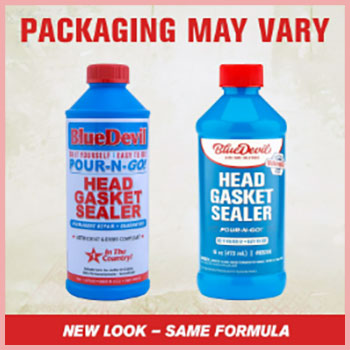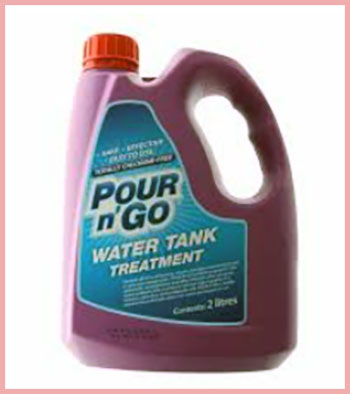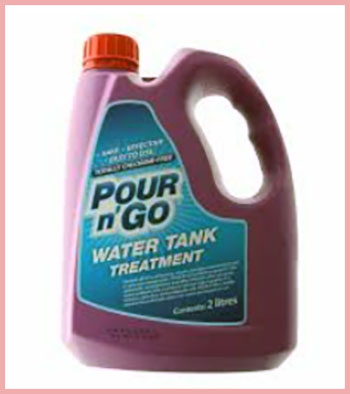I’ve been elbow-deep in car repairs for years, and when my old truck started spewing white smoke, I knew I had a head gasket issue. Faced with a costly repair, I turned to BlueDevil’s Head Gasket Sealer and its Pour-N-Go variant to buy some time. In this article, I’ll compare these two products, breaking down their features, pros, cons, and real-world performance to help you decide which might save your engine—and your wallet. Let’s get under the hood and figure out what works best for your ride.
Comparison Table
| Feature | BlueDevil Head Gasket Sealer | BlueDevil Pour-N-Go Head Gasket Sealer |
| Application Process | Complex: Remove thermostat, flush system, idle for 50 minutes | Simple: Pour into radiator, idle for 50 minutes |
| Engine Size Suitability | Larger engines (6-8 cylinders) | Smaller engines (4-6 cylinders) |
| Flush Required | Yes, thorough flush needed | No flush required |
| Thermostat Removal | Yes | No |
| Volume | 32 oz | 16 oz |
| Price (Approx.) | $60-$70 | $30-$40 |
| Permanent Fix Claim | Yes | Yes |
| Ease of Use | Moderate | High |
| Risk of Clogging | Low, if directions followed | Low, but higher if system is dirty |
My Journey with Head Gasket Sealers
When my 2001 Chevy Silverado started overheating and bubbling coolant, I feared the worst: a blown head gasket. A mechanic quoted me $2,000 for a repair, which wasn’t in the cards. Desperate to keep my truck running, I stumbled across BlueDevil’s head gasket sealers. The brand’s reputation for “permanent” fixes intrigued me, but I was torn between the original Head Gasket Sealer and the simpler Pour-N-Go version. I decided to try both—first on my truck, then on a friend’s old Honda Civic—to see which delivered.
Understanding BlueDevil Head Gasket Sealer

The BlueDevil Head Gasket Sealer is the brand’s flagship product, designed to tackle leaks in blown head gaskets, warped heads, cracked heads, heater cores, and freeze plugs.
It’s a 32-ounce bottle of chemical magic that claims to bond with metal, aluminum, cast, alloy, or plastic, creating a seal that withstands high temperatures and pressures.
BlueDevil markets it as a permanent fix, safe for gasoline and diesel engines, with no solid particles to clog your cooling system.
Key Features
- Volume: 32 ounces, suitable for larger engines (6-8 cylinders).
- Application: Requires removing the thermostat, flushing the cooling system, and idling the engine for 50 minutes.
- Compatibility: Works with all antifreeze types and engine materials.
- Claimed Benefits: Permanent repair, no clogging, bonds to multiple surfaces.
My Experience
Using the original sealer on my Silverado was a project. I had to drain the coolant, remove the thermostat (a pain on a V8), and flush the system with a garden hose and a radiator flush chemical. After pouring in the sealer, I let the truck idle for 50 minutes with the heater on full blast. The process took about three hours, and I was skeptical. But after a week of driving, the bubbling in the radiator stopped, and the overheating was gone. It’s been six months, and the truck’s still running strong.
Pros
- Effective for Severe Leaks: It sealed my truck’s significant head gasket leak, which was causing coolant loss and white smoke.
- Larger Volume: The 32-ounce bottle is ideal for bigger engines, ensuring enough product to circulate.
- Permanent Fix Potential: My truck’s repair has held up, supporting BlueDevil’s claim of a lasting seal.
- Versatile: Works on various cooling system leaks, not just head gaskets.
Cons
- Complex Application: Removing the thermostat and flushing the system is time-consuming and requires mechanical know-how.
- Costly: At $60-$70, it’s a pricey gamble if it doesn’t work.
- Risk of Error: Skipping steps (like flushing) can lead to clogs or reduced effectiveness.
- Time Investment: The process can take several hours, not ideal for quick fixes.
Exploring BlueDevil Pour-N-Go Head Gasket Sealer
The Pour-N-Go version is BlueDevil’s answer for folks who want a simpler fix. Designed for smaller engines (4-6 cylinders), this 16-ounce bottle promises the same permanent seal without the hassle of thermostat removal or system flushing. You pour it into the radiator, idle for 50 minutes, and drive on. It’s marketed as a user-friendly solution for non-mechanics or those short on time.
Key Features

- Volume: 16 ounces, tailored for smaller engines.
- Application: Pour into radiator, idle for 50 minutes, no flush or thermostat removal needed.
- Compatibility: Safe for gasoline and diesel engines, bonds to similar materials as the original.
- Claimed Benefits: Easy to use, permanent repair, no clogging.
My Experience
I used Pour-N-Go on my friend’s 2004 Honda Civic, which had a slow coolant leak and occasional overheating. The process was a breeze—drain enough coolant to make room, pour in the sealer, and idle for 50 minutes with the heater on. It took about an hour total. The leak stopped, and the car ran smoothly for three months. But recently, the overheating returned, suggesting the fix may not be as durable for some engines.
Pros
- Super Easy to Use: No mechanical skills needed; it’s as simple as pouring and idling.
- Affordable: At $30-$40, it’s half the price of the original sealer.
- Quick Application: Done in about an hour, perfect for those in a rush.
- Effective for Minor Leaks: It worked well on the Civic’s small leak initially.
Cons
- Less Durable: The fix on the Civic didn’t last, indicating it may not handle severe leaks as well.
- Smaller Volume: Only suitable for smaller engines, limiting its versatility.
- Risk with Dirty Systems: Without flushing, debris in the cooling system can cause clogs, as some users report.
- Temporary Fix Potential: Some reviews suggest it buys time rather than a permanent solution.
Read More: Ravenol vs. Eurol
Head-to-Head Comparison
Choosing between these sealers depends on your engine, leak severity, and comfort with DIY repairs. Let’s break it down.
- Application Process
The original sealer’s process is a commitment. Removing the thermostat and flushing the system requires tools, time, and patience. I spent half a day on my Silverado, but the thorough prep likely contributed to the lasting fix. Pour-N-Go, on the other hand, is a lunch-break job. I finished the Civic’s application in an hour, but the lack of flushing may have left debris that affected long-term results.
- Engine Suitability
The 32-ounce original sealer is built for big engines like my V8 Silverado. It has enough volume to circulate through larger cooling systems, ensuring the chemical reaches the leak. Pour-N-Go’s 16 ounces is perfect for 4- or 6-cylinder engines like the Civic but may fall short in bigger setups. If you drive a truck or SUV, stick with the original.
- Effectiveness
My Silverado’s severe leak was fixed solidly with the original sealer, and it’s still solid six months later. The Civic’s mild leak was patched with Pour-N-Go, but the issue resurfaced, suggesting it’s better for small leaks or temporary fixes. User reviews echo this: the original sealer has a higher success rate (around 60-70% per some mechanics) for serious issues, while Pour-N-Go shines for quick, minor repairs.
- Cost and Value
The original sealer’s $60-$70 price tag stings, but it saved me $2,000 in repairs. Pour-N-Go’s $30-$40 cost is easier to swallow, especially for a car you don’t plan to keep long. If your engine’s worth saving, the original’s higher cost may be justified. For a beater car, Pour-N-Go’s affordability makes it a low-risk bet.
- Risk Factors
Both products claim to be non-clogging, but user errors can cause issues. With the original sealer, skipping the flush can leave debris that mixes with the chemical, potentially clogging radiators or heater cores. Pour-N-Go’s no-flush approach is riskier if your cooling system’s dirty—some users report crystallization in neglected systems. Always follow directions to minimize risks.
Real-World Insights from Other Users
I scoured forums like Reddit, ToyotaNation, and Jeep Cherokee Forum to see what others think. Many praise the original sealer for saving high-mileage vehicles. One user on Reddit’s r/Cartalk said it kept their 2003 Honda Pilot running for 40,000 miles after a head gasket leak. Others report mixed results with Pour-N-Go—some swear by it for quick fixes, while others, like a user on Impala Forums, saw leaks return after a few months.
Mechanics are split. Some users on forums mention a shop quoted on ToyotaNation, claiming a 60% success rate with the original sealer, buying 6-12 months. Others warn against sealers entirely, citing potential clogs or damage to machine shop tools during future repairs. My take? Sealers are a gamble, but BlueDevil’s products have enough success stories to warrant a try if you’re in a bind.
When to Use Each Product
Choose BlueDevil Head Gasket Sealer If:
- You have a larger engine (6-8 cylinders).
- Your leak is severe (white smoke, significant coolant loss, or bubbles in the radiator).
- You’re comfortable with basic mechanical work like thermostat removal.
- You want a potentially permanent fix and are willing to invest time and money.
Choose BlueDevil Pour-N-Go If:
- You have a smaller engine (4-6 cylinders).
- Your leak is minor (slow coolant loss, occasional overheating).
- You want a quick, easy application with minimal tools.
- You’re looking for a temporary fix or a low-cost gamble.
Tips for Success with Either Product
From my trials and user feedback, here’s how to maximize your chances of a successful repair:
- Diagnose First: Use a block tester (about $30 at auto parts stores) to confirm a head gasket leak. Bubbles in the radiator or a color change in the tester fluid are telltale signs.
- Follow Instructions Exactly: For the original sealer, don’t skip the flush or thermostat removal. For Pour-N-Go, pour slowly (over a minute) and run the heater on high.
- Clean Your System: Even with Pour-N-Go, a quick flush with water can reduce clogging risks if your coolant looks murky.
- Monitor After Application: Check for leaks or overheating in the days following. Change the oil as a precaution, as some sealer may seep into it.
- Know Your Limits: If the leak’s too severe or your engine’s already damaged, a sealer may not help. Consider a professional repair or replacement.
Frequently Asked Questions (FAQ)
Pour-N-Go is a 16-ounce sealer for smaller engines, requiring a quick, no flush required—just pour in and idle. Regular BlueDevil is a 32-ounce sealer for larger engines, needing a thorough flush and thermostat removal.
It depends on your needs. BlueDevil Head Gasket Sealer is best for severe leaks and larger engines; Pour-N-Go is ideal for minor leaks and quick fixes. Steel Seal is also a strong contender for permanent fixes.
Unlikely if used correctly. Both products are designed to be non-clogging, but improper use in any system (e.g., skipping flushes) can cause issues like radiator clogs. Follow instructions to minimize risks.
About 50 minutes of idling after pouring, plus 24 hours of sitting before driving. Results may take a few days to fully seal, depending on the leak’s severity.
Also Read: Maaco vs. Caliber Collision
Conclusion
I’ve shared my journey with BlueDevil’s Head Gasket Sealer and Pour-N-Go, and now it’s your turn to decide. Whether you’re battling a stubborn leak in your truck or a slow drip in a compact car, these products offer a lifeline when repairs aren’t an option. Weigh the pros, cons, and your engine’s needs to pick the right one. You’ve got this—get that car back on the road!

